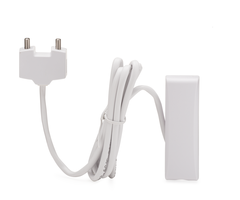Taking a summer trip DIYers? You need peace of mind to maximize your fun. Knowing that your home is safe and operational is a great feeling. You have a lot of planning before you go on vacation, and we're here to help you get ready. Here are some ways you can prepare for your next vacation.

Get a Smart Thermostat
A smart thermostat is the perfect accessory if you plan on taking a trip during the summer months. It's hot out! You don't want to come home and suddenly discover that your HVAC system has stopped working. The last thing you need when you come home is an uncomfortable house. You can pair your smart thermostat with your security system and start using it with an interactive platform like Total Connect 2.0 or Alarm.com. While you're on the beach or lounging by the pool, you can check your home's temperature and make sure it's reasonable. You don't want to set the temperature too low; there's no reason to waste the extra energy. But you can check and make sure that it's at a reasonable level to know that your HVAC system is working properly. You can even set up automatic notifications if the temperature gets too high.
We actually just made a post showing-off some of the best smart thermostats on our site. Check it out!

Get a Smart Door Lock
Let's say that your smart thermostat shows a very high temperature, and you suspect your HVAC system might be broken. How are you gonna let the repair person inside? You're on vacation, and you triple-checked to make sure your doors are locked! Well with your smart door lock, you can let the repair person inside and then lock the door behind them when they leave. What about your plants or your puppy? Your friendly neighbor is going to need to get inside to take care of them. You don't have to give them a key. Just make them a guest code on your smart lock, along with a guest code on the panel. Or if you are extra cautious, you can always lock and unlock the door and arm and disarm your system from TC2 or ADC. This is the perfect way to make sure that your home stays in order while you're off relaxing somewhere far away.
We did a post a few months ago on some great smart door looks. Take a look!

Get Alarm Monitoring
You won't able to use your smart door lock and your smart thermostat without a hub. And what better hub than a brand-new security system? At Alarm Grid, we have all you need to make sure that your home is safe and secure while you are gone. If someone dares to break-in to your house while you're off on the vacation you worked hard for, we'll make sure that they pay the price. We offer monitoring plans that will connect your alarm system with a 24/7 central station for automatic police dispatch in these serious situations. The smart home control features are a nice touch, but keeping your home and your possessions safe is always a top priority. We have many alarm panels and security sensors to protect homes big and small.
We recently did a comprehensive post covering all our available monitoring plans. Here it is!

Get Environmental Sensors
Protecting your home from a robbery is important, but what about environmental conditions? There could be a water leak that causes a flood in your basement, or maybe a wildfire affects your property. It would also be a real bummer to come home to a natural gas leak. We have sensors for all these situations. You can get flood sensors, smoke and heat detectors, and natural gas detectors all from Alarm Grid. Your Total Connect 2.0 or Alarm.com service will send you a text and/or email alert so that you know about the activated sensor as soon as it happens. And if it's something serious like a fire, emergency help will be sent out if you have central station service. Alarm Grid has all the environmental sensors you need to know that your home is ready for your vacation.
We know what happens when people don't use environmental sensors. Don't let this happen to you!

Contact Us!
You need to do one last thing before you Arm Away, lock your smart lock and set your smart thermostat schedule. That is contact Alarm Grid to let us know about your vacation plans! If you want any changes for the dispatching process, make sure to inform us. This could include something like having the central station call your neighbor or your friend instead of you while you're away. Letting us know about your vacation schedule is also extremely important if you plan on having someone else looking after your house while you are away. You should let us know that a neighbor or a friend will be using your system during this time. You might even tell us which user code they will be using so that we know to look out for anything unusual. This is really only necessary if you need temporary changes to your account while you are gone.
If you need to let us know about your vacation plans, you should send a quick email to support@alarmgrid.com. Our support team will check your email as soon as possible and put the necessary information on your account. Enjoy your vacation, and stay safe and relaxed with Alarm Grid on your side!



















